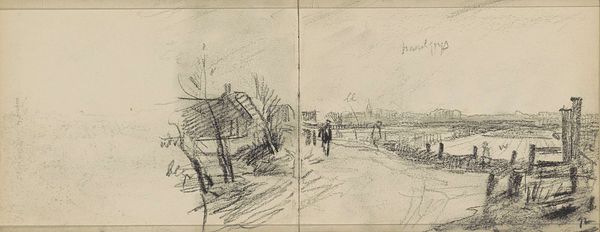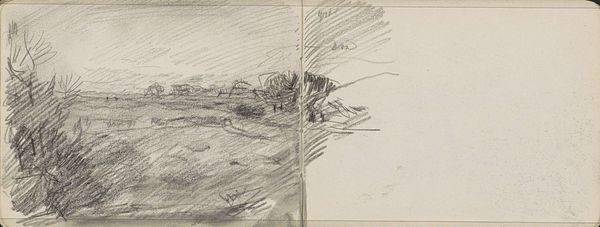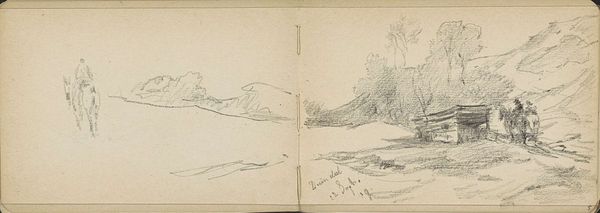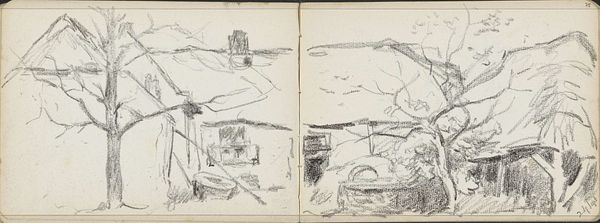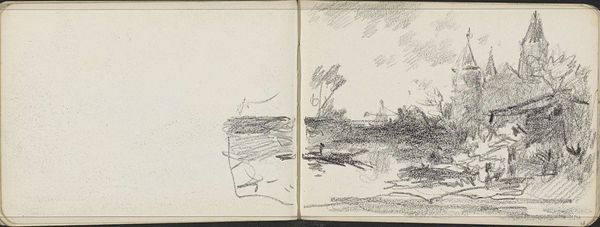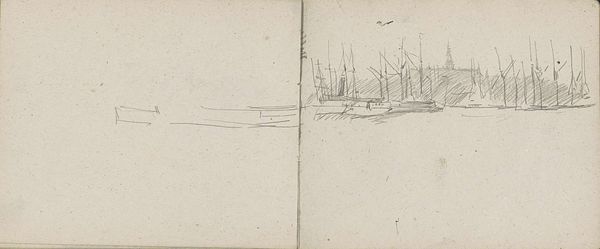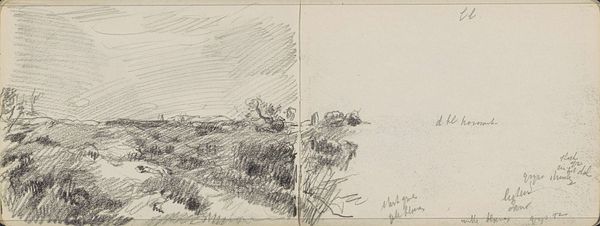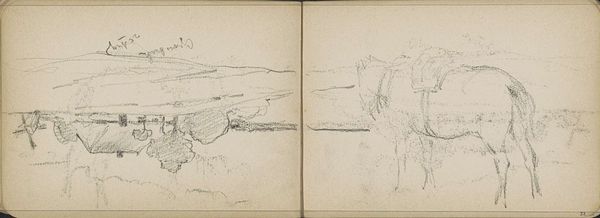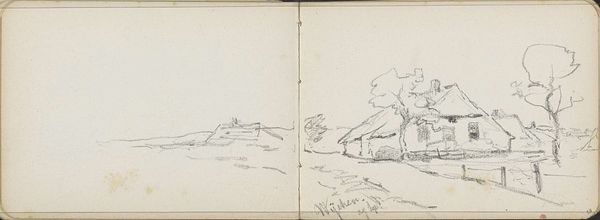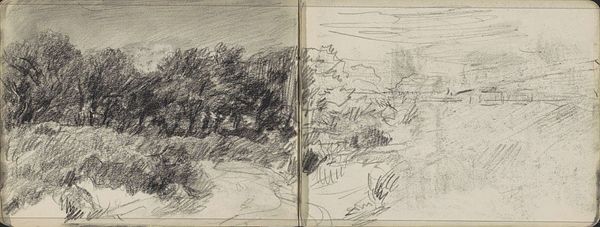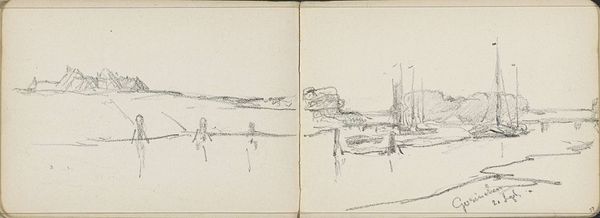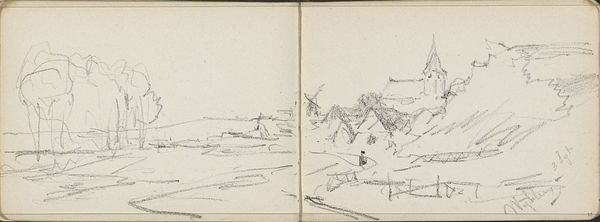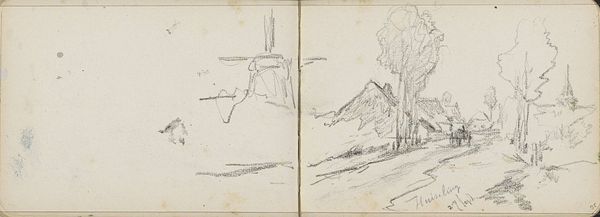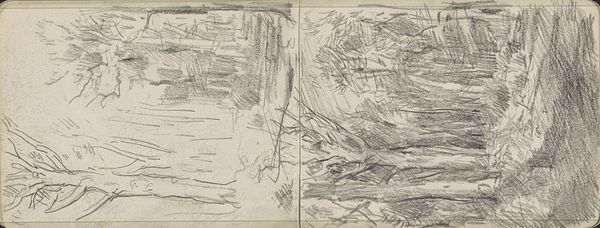
Copyright: Rijks Museum: Open Domain
Curator: This drawing, created by Willem Cornelis Rip in 1919, is titled "Schepen op het Prins Hendrikkanaal te Katwijk aan Zee," which translates to "Ships on the Prince Hendrik Canal at Katwijk aan Zee." It's a pencil drawing, part of a sketchbook, depicting a serene waterside scene. What catches your eye first? Editor: There’s something very intimate and immediate about this work. The lightness of the pencil strokes evokes a quiet moment of observation, capturing a very specific atmosphere in the landscape. I feel invited into the artist’s personal experience. Curator: It certainly has a raw, authentic quality. Katwijk aan Zee, a coastal town, was known for its fishing industry, and Rip was known to capture the essence of daily life around him. We see in this image the ships, presumably fishing vessels, a key element of the town's economy and culture. The sketchbook format underscores a casual kind of record-keeping and documentation. Editor: The positioning within a sketchbook provides invaluable insight into Rip’s process. The facing page of vague lines seems to work as preparation. Was he perhaps working out the composition of the following piece? Was the act of artmaking something that had equal weight as the finished piece, an echo of his intention to be fully aware of the realities and conditions in Katwijk? Curator: Precisely! Sketchbooks are interesting to explore this sort of contextual relationship to final projects. There's a conscious act of selecting this particular view, and a kind of honest rendering of what was in front of him. His choice reflects, perhaps, the working-class reality and environment during that era. Consider the historical period too - 1919, the end of World War I. Editor: Yes, the immediacy and sketch-like quality gain additional context here. The artist’s rapid recording of this seaside port and town gives us an invaluable glimpse into the texture of ordinary life. And this makes me wonder what kind of social infrastructure allowed artists like Rip the space and opportunity to practice? How does access shape our artistic records and memory of this period? Curator: That is indeed a critical question. Artists and artworks reflect—and can actively shape—the cultural and socio-political landscape. Willem Cornelis Rip, through his art, captured and contributed to the identity of a town and a people navigating a transformative period in history. Editor: A simple drawing, pregnant with contextual depths that bring Katwijk aan Zee in 1919 to life again. It shows art’s immense power, doesn’t it?
Comments
No comments
Be the first to comment and join the conversation on the ultimate creative platform.
